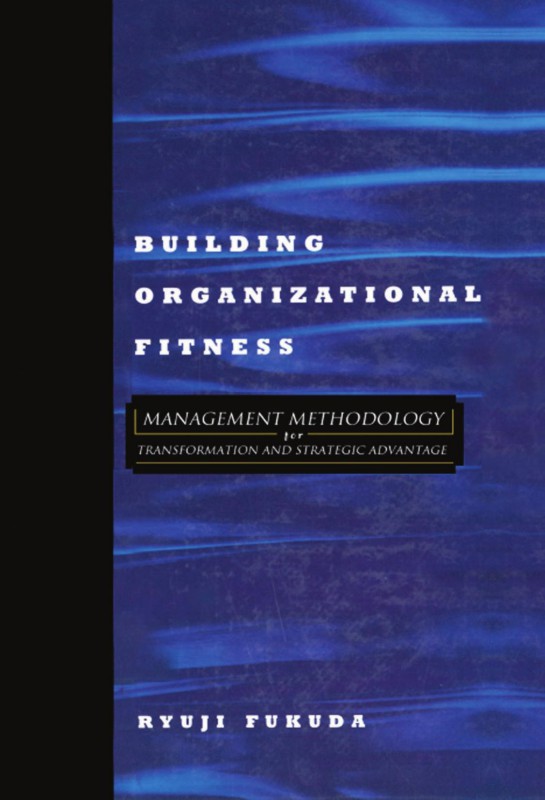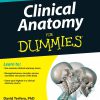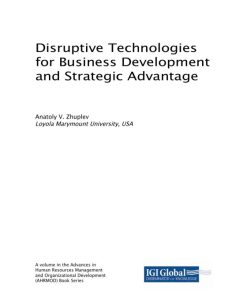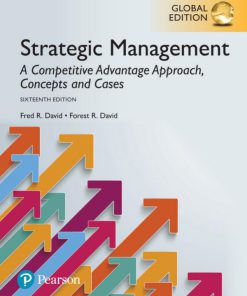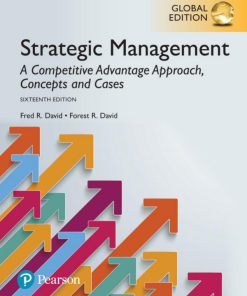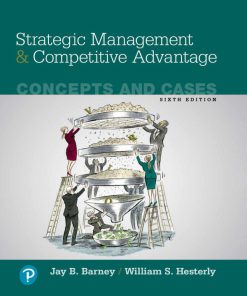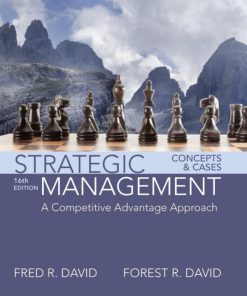Building Organizational Fitness Management Methodology for Transformation and Strategic Advantage 1st Edition by Ryuji Fukuda 1563271443 9781563271441
$50.00 Original price was: $50.00.$25.00Current price is: $25.00.
Authors:Ryuji Fukuda , Author sort:Fukuda, Ryuji , Published:Published:Jun 2017
Building Organizational Fitness Management Methodology for Transformation and Strategic Advantage 1st Edition by Ryuji Fukuda – Ebook PDF Instant Download/Delivery. 1563271443, 9781563271441
Full download Building Organizational Fitness Management Methodology for Transformation and Strategic Advantage 1st Edition after payment

Product details:
ISBN 10: 1563271443
ISBN 13: 9781563271441
Author: Ryuji Fukuda
Undoubtedly, the most urgent task for companies today is to take a hard look at the future. To remain competitive, management must nurture a strong capability for self development and a strong corporate culture, both of which form part of the foundation for improvement. But simply understanding management techniques doesn’t mean you know how to use them. You need the tools and technologies for implementation. In Building Organizational Fitness, Ryuji Fukuda extends the power of his managerial engineering methodology into the context of the top management strategic planning role. Published here for the first time, the author provides information on the evolution of his CEDAC methods for use in strategic planning and implementation. The book introduces several key management technologies and describes their successful application in many Japanese, American and European companies, including: P/O (Policy Objective) Matrix, SEDAC (Structure for Enhancing Daily Activities through Creativity), Window Analysis ( a method for classifying and analyzing problem for a view point of management actions required), and Stockless Production (an approach to reduce work-in-process and lead time in an effective and easy-to-understand manner).
Building Organizational Fitness Management Methodology for Transformation and Strategic Advantage 1st Table of contents:
CHAPTER 1 ⎸ MANAGING FOR SHAPING THE FUTURE
Improvement, Innovation, and Transformation
Management Must Always Transform
Securing Profits
Fostering and Using Improvement and Development Powers
What Should Management Technologies Be Used For?
The Effectiveness and Limitations of Management Technologies
Types of Management Technologies and Their Users
The Speed of Transformation Is a Function of Organizational Fitness
Seven Conditions for the Fast Track
Condition 1: Top Management Commitment
Condition 2: Superior Development Capabilities
Condition 3: Superior Managing Capabilities
Condition 4: Effective In-House Education and On-the-Job Coaching
Condition 5: Total Active Participation of Staff Departments
Condition 6: Enabling Structures to Promote Improvement in Daily Work
Condition 7: Enabling Structures That Encourage Creative Improvements by Integrating Knowledge and Experience
Some Characteristic Examples
Universal Applicability
Urgency and New Challenge
In-House Education: The Basis for Improvement Activities
Improvement That Reflects Each Company’s Individuality
How Long Does It Take to Become a First-Class Company?
CHAPTER 2 ⎸ ORGANIZING ACTIONS FOR IMPROVEMENT/ TRANSFORMATION: THE POLICY/OBJECTIVE MATRIX
Managing Improvement Activities
Making Top Management Commitment Tangible
Combining Policy Management and Management by Objectives
Achieving Objectives as Planned
How to Build a P/O Matrix
Section I: Policy
Section II: Objectives
Section III: Targets
Section IV: Principal and Supporting Members and Leaders
Section V: Scheduling
Section VI: Overall Effects
When to Prepare a P/O Matrix
Integrating with Culture
Responsibility for Saying No
How to Use the P/O Matrix
Visible Management
True Volunteerism
When Are People Most Motivated?
Strengthening Leadership for Improvement
Quick Response to Changes in Surrounding Environment
Committing to Profit
Removing Obstacles
A Long Way, But…
CHAPTER 3 ⎸ STRENGTHENING IMPROVEMENT POWER THROUGH SEDAC
Creativity and Everyday Business
From CEDAC to SEDAC
How to Develop a SEDAC
Speed and Power
Purposiveness
Professionalism
Linkage Between the P/O Matrix and SEDAC
Breaking Down the P/O Matrix with a Systematic Diagram
SEDAC at Each Level
Types of SEDAC
Expandable Cause-and-Effect SEDAC
Arrow Diagram SEDAC for Staff Function Improvement
FMEA SEDAC for Prevention by Prediction
PDPC and SEDAC Side by Side
Case Examples of Results from SEDAC Implementation
CHAPTER 4 ⎸ FUNDAMENTALS OF IMPROVEMENT THROUGH SEDAC
Thoughts on the Improvement Process
Idea Generation
Using the Full Power of an Organization
SEDAC as a Vehicle for Moving Forward
The Leader’s Role in Constant Thinking
Improvement Should Be Enjoyable
Trial-and-Error Through Intrinsic Technology, Knowledge, and Experience
Reliable Standards Development
A System for Learning from Failure—We Have No Alternative
Feedback
Empowerment and Failure Prevention
Understanding Field Science
An Encounter with Dr. Jiro Kawakita
The Three Sciences and SEDAC
Study Group Activities for Companywide Integration
CHAPTER 5 ⎸ STAFF FUNCTION IMPROVEMENTS
Lessons Learned from Past Mistakes
The Uniform Control Syndrome
The Measurement Obsession Syndrome
Advanced Techniques
Aspects of Improvement
Attack the Work in Front
Always Find Ways to Measure
SEDAC on an Arrow Diagram
Effective Use of Arrow Diagram Features
Staff: An Engine for Improvement
SEDAC on FMEA
Use of Reliability Engineering
Accelerating with Prevention by Prediction
Sharpening Engineering Sensibility
Reliability Improvement and Cost
PDPC and SEDAC
TPM and SEDAC
Organizing Effective Measures on a Weibull Distribution
Doing SEDAC with Textbook in Hand
New Equipment Development and Maintenance
An Organization for Companywide Improvement
CHAPTER 6 ⎸ USING WINDOW ANALYSIS FOR ACCURATE FACT FINDING AND EFFECTIVE COUNTERMEASURES
Aims of Window Analysis
Origins of Window Analysis
How to Use Window Analysis
Window Analysis Case Studies
Case 1: The Coffee That No One Drank
Case 2: A Mistake-Proofing Mistake
Case 3: Too Busy to Remember
Case 4: A Ten-Day Wait
Case 5: An Accident Six Years Later
Lessons Learned from Window Analysis
Difficulty in Fact-Finding
An Advantage of Window Analysis: Prevention by Prediction
Orienting Action
Dramatic Results
CHAPTER 7 ⎸ STOCKLESS PRODUCTION AND SEDAC
Origins of Stockless Production
Stockless Production: Eight Measures
Production Is a Network of Processes and Operations
What Levels of Product Availability Do Your Customers Want?
What Indicators for Managing Production?
Lead Time and Work-in-Process Quantity
How to Promote Stockless Production
Developing a Promotion System Using the P/O Matrix
Implementation Using SEDAC
Computerization after Stabilizing Improvements
Securing Results Through the Scientific Approach
Challenging Delays in Information Flow with CIM
CAD/CAM: An Advanced Company’s Weapon for Business Strategy Realization
Case 1: Melbo Suits Company
Case 2: National Bicycle Industries
CHAPTER 8 ⎸ IMPROVING AND MAINTAINING ORGANIZATIONAL FITNESS
Intellectual Creativity: Practice Is the Key
Doing the Work or Being Forced to Do the Work?
Good Maintenance Amplifies Improvement Results
Use of Control Charts for Process Control
Living Control Charts
Trust and Everyday Checking Can Go Hand in Hand
Cautions in Using SEDAC
Agenda for Management Technology
Continuing to Develop Capabilities
Instituting Simplicity and Ease
Vitalizing the Suggestion System
Tomorrow
Direction of Changes
Such-and-Such Management Japonica
People also search for Building Organizational Fitness Management Methodology for Transformation and Strategic Advantage 1st:
organizational fitness
gym organizational structure
gym organizational chart
fitness center organizational chart

